Whitmore Square was one on six squares laid out by Colonel William Light in his 1837 Plan of the City of Adelaide. The streets and squares in the plan were named by a Street Naming Committee made up of Governor Hindmarsh, Colonel Light and ten other prominent colonists on 23 May 1837.
Situated in the southwest corner of the city, Whitmore Square was named after William Wolryche Whitmore MP (1787–1858). Whitmore was a Whig member of the British House of Commons and a spokesperson for liberal causes such as the abolition of slavery and Catholic emancipation. He also opposed the use of convict labour and was concerned to provide employment opportunities for working people. Whitmore was a founding member of the South Australian Association, which lobbied for the establishment of the colony of South Australia. One of the guiding principles of the plan, and a likely attractive one for Whitmore, was the condition that the colony be worked by free labour and not convicts as was the case in Victoria and New South Wales. It was Whitmore who introduced the South Australia (Foundation) Bill into the British House of Commons in 1834.
Aboriginal associations
The original inhabitants of the Adelaide Plains were the Kaurna people. The Adelaide City Council acknowledges their prior occupation of the land and has sought to recognise their heritage by giving Kaurna names to the city’s parks and squares. It has worked closely with Kaurna people in determining these names. The Kaurna name given to Whitmore Square is ‘Ivaritji’, after the daughter of Ityamaitpinna, a Kaurna man from Aldinga on Fleurieu Peninsula and one of the ‘chiefs’ of the Adelaide tribe, and Tankaira, from Clare in the Mid North. The name ‘Ivaritji’ means ‘a gentle, misty rain’. Ivaritji (1847?–1929), also known as Amelia Taylor, was believed to be the (then) last remaining speaker of the Kaurna language. She was responsible for identifying many areas of cultural significance in the city, such as the lake in the Botanic Garden, Victoria Square/Tarndanyangga and ‘Ngamatyi’, the name she provided for the General Post Office site on King William Street. Ivaritji continues to be a strong female figure for Kaurna people.
Whitmore Square has been and still is a gathering place for Aboriginal people. It was a particularly prominent meeting place in the 1930s and 1940s. Much of the Aboriginal population resident in Adelaide during this period were located in the west of the city, which provided affordable housing and access to places of continuing cultural significance in the South Parklands and West Parklands. Children went to the nearby Sturt Street School and some had connections with St Luke’s Church on the western side of the square.
Park History and Development
Only Whitmore Square in Adelaide and Wellington Square in North Adelaide retain the configuration given to them in Light’s Plan. Neither has been dissected by roads, unlike other squares that have succumbed to the demands of increasing vehicular traffic.
Initial colonial settlement of the city site led to the removal of indigenous trees and understory plants. Systematic replanting of the squares with European and Australian varieties began in 1854–55. The earliest trees recorded as having been introduced to Whitmore Square were six olives. Aleppo pine, Pepper and Silky Oak trees and the Kaffir Apple shrub followed. In the early twenty-first century the most prominent trees in Whitmore Square are the intricately rooted Moreton Bay figs. Despite there being few indigenous plants, longstanding local resident Councillor Megan Hender observed, ‘It is pleasing to see that in every tree … resides a possum or two. It’s good to see the wild animals right in the heart of the city’.
Post and rail fencing was installed by the city council in the 1850s to protect plantings from introduced animals, including goats kept by locals and livestock being driven through the city to the cattle and sheep yards on North Terrace. The wooden fencing was replaced in 1881 by ornate cast iron fencing, which allowed access to the square via gates. These were finally removed in 1932.
In the first decade of the twentieth century the replacement of horse drawn trams with electric trams led to the only significant alteration to Whitmore Square. In 1909 tracks for electric trams were laid through the square, cutting off its northwest corner. Fortunately, this change was not permanent. By 20 November 1958 all tram services, with the exception of the Adelaide–Glenelg route, had been terminated in favour of bus transport. The alienated section of Whitmore Square was returned. However, evidence of the old tram route can still be seen (particularly in aerial photographs) in the sparser tree coverage of that section of the square.
During the Second World War soldiers were trained and air raid trenches were installed in Whitmore Square. After the war the trenches were used as public refuse pits: because drainage had not been provided, standing water exacerbated risks to public health. Other aspects of the square were also neglected. Lawns became patchy and some of the aging trees needed treatment or replacement. In 1952 a report by the City Council Parks and Gardens Committee led to treatment of the lawns and the removal of many trees and shrubs.
Apart from routine maintenance, little further work was carried out in Whitmore Square until the late 1960s. In 1967, while the council’s head of parks and gardens considered the square to be in relatively good shape, Councillor Harvey argued that it was sadly neglected:
Whitmore Square … could well be called Cinderella Square because … we find acres of scraggy trees that are obviously planted at random and badly in need of attention … The toilets are of an age that would make them eligible for reclamation by the National Trust and the fittings inside of them are similarly set up. Now the lighting posts – they are reeling at odd angles and there are small incandescent globes which give the park a very dark, eerie and sinister look after dark and when you see the Police cars darting around in the Square you can’t help feeling that this is a good setting for a Conan Doyle thriller … The huge gnarled roots of the Moreton Bay fig trees are jutting out all over the paths and the seats are unpainted and badly aligned and a rusty 44 gallon drum is chained to a post … (Council Minutes, 27 November 1967)
Following these observations and a campaign led by Councillor Harvey, public amenities were improved. A new toilet block was installed and seats painted. An oversized draught/chess board was also constructed out of slate and white concrete, with galvanised set pieces for community use.
By 1974 Whitmore Square had developed into an Adelaide precinct with an urban village feel. Local housing varied and was interspersed with a range of shops, restaurants, small offices and businesses. A strong sense of community persisted, with the focus remaining on the square itself as a centre for recreation and local events. Council determined that the landscape of the square should reflect the village atmosphere and ensured that signage was discreet and kept to a minimum. (Corporation of the City of Adelaide, 1974)
To emphasise the recreational use of the square the council reconstructed the giant draught/chess board in 2007 and installed a basketball half-court in 2009. In December 2007 a public artwork entitled Voyagers was unveiled on the west side of the square, not far from the Adelaide Mosque in Little Gilbert Street. The sculpture commemorates ‘Afghan’ cameleers who migrated to South Australia during the nineteenth century to work in outback areas. Some of these cameleers worshipped at the mosque and lived out their days in nearby cottages.
Councillor Hender’s comment captures local sentiment regarding the development of Whitmore Square: ‘it’s the best square in Adelaide because it is still whole, still a square. The square has retained its original look and feel, and this has benefitted the local residents’.
Buildings around Whitmore Square
One and two-storey housing has dominated construction on the west side of Whitmore Square and its southwest corner from the 1870s, emphasising its predominantly residential character. Several significant public and community organisations and buildings have also been located in the square. Most of these establishments reflect the character of the neighbourhood as predominantly working class and the difficulties experienced by residents during periods of economic depression. Services for people at risk and on the margins of society have a long-standing presence. Organisations that no longer exist include the Women’s Club, which operated from a two-storey terrace on the west side. The club was designed as an alternative recreational venue to the local dance halls and hotels around Light Square for young women perceived to be at risk. The Anglican Church and the Salvation Army continue to provide welfare services from Whitmore Square.
The Supreme Court building
South Australia’s first Supreme Court building was situated on the southeast corner of Whitmore Square. The wooden structure with a wood shingle roof appears to have existed from early 1837 until 1842 when the court moved to the converted Queen’s Theatre on the corner of Gilles Arcade and Playhouse Lane, between Currie Street and Waymouth Street. The first judge of the court, Sir John Jeffcott, drowned while attempting the cross the Murray Mouth in December 1837 and was replaced by Sir Charles Cooper, who lived in premises constructed in 1840 next to the court. The wooden court building was soon demolished, but the home of Judge Cooper became part of the Bushmen’s Club.
Bushmen’s Club/Salvation Army Home
The bluestone wings east and west of the present William Booth Memorial Home operated by the Salvation Army are the only remains of the Bushmen’s Club, which began in 1870 on the site previously occupied by the Supreme Court building. The club provided accommodation for workers associated with the pastoral industry. Membership was required. It was established by pastoralists and businessmen, including John Howard Angas, David Murray and William Kyffin Thomas, who initially met in the house originally owned by Judge Cooper. The bluestone wings were added in 1871 and 1872. The location of the building was carefully considered so that its members were semi-isolated from the seedier goings-on in Light Square and Adelaide’s many hotels. In 1899 the building and its surrounding land were sold to the Salvation Army. It remains a place of shelter and support to those who are affected by alcohol and other drugs.
St Luke’s Church and former rectory
The foundation stone for St Luke’s Church on the west side of Whitmore Square was laid on 11 September 1855 by Governor Sir Richard Graves MacDonnell, assisted by the Anglican bishop of Adelaide, Dr Augustus Short. The bluestone building, designed by Edmund Wright and constructed by Thomas Hall, was consecrated on 14 February 1856.
In 1874 a rectory designed by EJ Woods was erected next to the church. The rectory was later extended and the church renovated and redecorated. In 1878 an organ built in Adelaide by Johann Wilhelm Wolff was installed in the church. Further additions to the complex and church were made in the 1880s and 1890s.
In April 1992 the church, including the organ, were destroyed by fire. St Luke’s was rebuilt with much community support, which reflected the long history of the church in the provision of social and welfare services such as accommodation and support to homeless youth.
The surrounding population and use of the square
Light intended that the squares of Adelaide, except for Victoria Square, be used as public parks or ‘village commons’. Whitmore Square, uniquely of all the squares, has established and maintained a community orientation. It provides a focus for those living around its perimeter and others residing in the southwest of the city.
Councillor Megan Hender recalled past and present uses:
I am told by older residents that in the past the locals slept in the square during heat waves. If the temperatures became unbearable at night, residents would take their bedding out to sleep in the square to make the most of the cool breezes that blew through …
Whitmore Square provides the traditional need for an outdoor space that benefits not just the local residents, but indigenous people and the homeless and vulnerable people who use the nearby services.
People on low incomes gravitated to the southwest corner of Adelaide from the second half of the nineteenth century. They worked locally and provided both services and produce for inhabitants of the city. With a better reputation than the area surrounding Light Square, many families were attracted to this corner and country people who came to the city for work or shopping elected to make use of nearby hotels and private facilities, such as the Bushmen’s Club, for short-term accommodation.
The population surrounding Whitmore Square became more diverse through the twentieth century as more migrants arrived, particularly those from southern Europe. Gardens flourished with new herbs, fruit and vegetables, which were in turn introduced to the city via local markets and corner shops. Councillor Hender noted the importance of the square to more recent arrivals:
The square has seen an emergence of a new community to the area: international students. The open air space provides the students with a chance to relax and enjoy Adelaide’s surrounds. It also provides them with a place to meet.
In the early twenty-first century Whitmore Square’s attractiveness to local residents comes from its proximity to city facilities and ease of access to public transport. Located near to the restaurant precinct of Gouger Street and the colourful shopping of the Asian Market and the Central Market, Whitmore Square is becoming the focus of improvements to residential spaces with a view to sustainable living in the heart of the city. This is reflected in the Affordable EcoHousing project, an initiative of the council in 2004.
Located on the southeastern side of the square, the Affordable EcoHousing project includes 26 residential apartments and one commercial property. Key features include solar passive design, gas-boosted hot water, rainwater to toilets, solar power for common area power requirements and a Smart metering system enabling occupants to monitor energy and water consumption. In keeping with the welfare awareness that characterises this part of the city, 20 of the residences were made available through the Federal Government’s National Rental Affordability Scheme, which is managed by the Lutheran Community House Support Unit Inc., one of many charities active in the local area.
The diverse community surrounding Whitmore Square is evident in the events regularly held there. The Vegan Food Festival, art fairs showcasing local artists and musical talent, and Christmas light shows with fun activities for families reflect a strong community spirit. Councillor Hender also noted the positive effects of inclusive planning and improvements made by the council:
In recent times, the square radiates a ‘boisterous joy’, rather than the flat atmosphere of the past. I put this down to the new recreational facilities installed in the square. City South, a community group funded by the Adelaide City Council, regularly run events that make active use of the square. When planning events, community groups consider and include the homeless residents that use [it]. This creates a whole-of-community event.


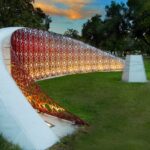

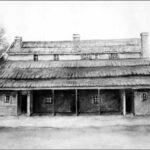
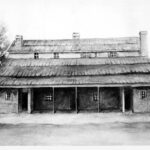
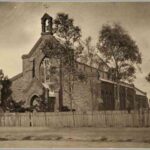
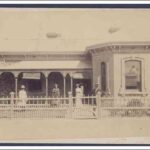
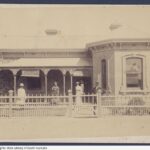
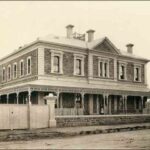
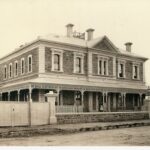
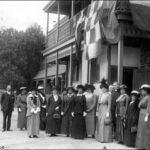
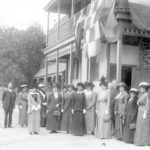

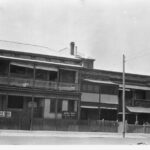
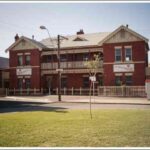
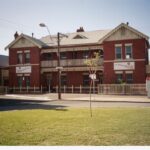
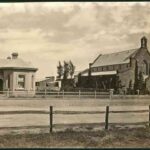
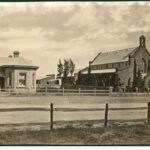
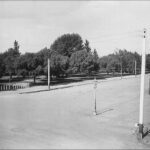
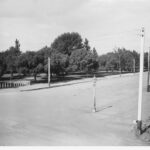
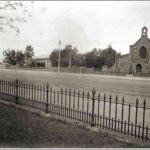
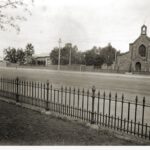
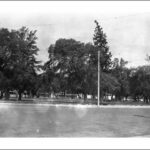

Comments